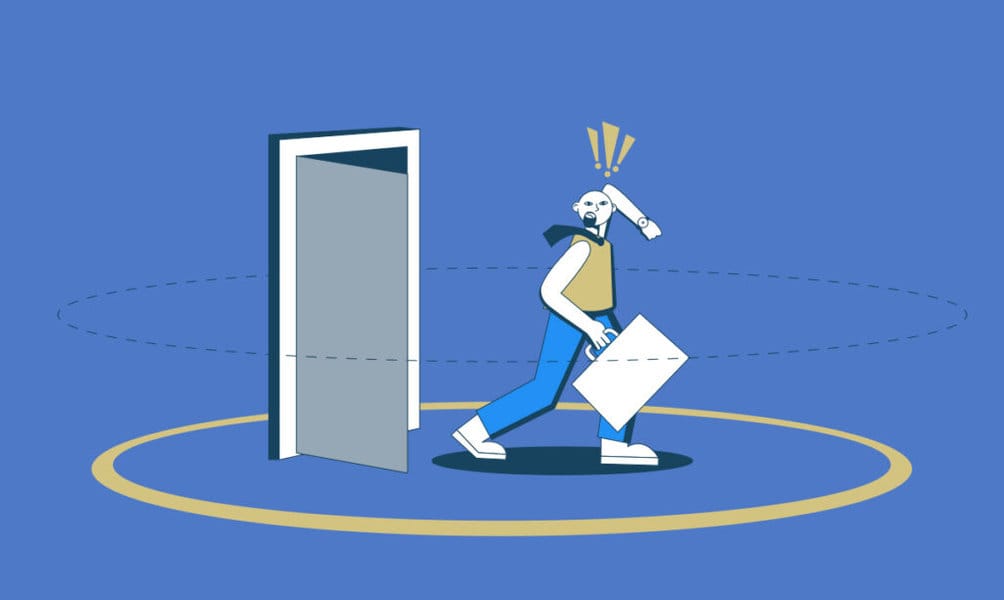Welcome back to theworkplace! You may feel overwhelmed by the responsibilities that await you or the uncertainty of what challenges lieahe ...
Back to Performance Management
How to Show Gratitude in the Workplace
Written by: Tamara Siklosi
Tamara is a seasoned copywriter with a unique blend of legal expertise, business acumen, and a passion for writing.
Reviewed by: Keca Ward
As a seasoned HR professional with over 20 years of experience, Keca is an expert in various aspects of Human Resources.
Updated on March 6, 2024

How to Show Gratitude in the Workplace
- Understanding Gratitude in the Workplace
- 8 Simple Ways to Show Gratitude in the Workplace
- Showing Gratitude for Different Occasions
- Creating a Culture of Gratitude
- Challenges and Solutions in Expressing Gratitude
- Conclusion
- FAQs on Gratitude in the Workplace
Feeling like you’re on a never-ending treadmill lately? You’re definitely not alone. With life zipping by at warp speed, it’s not easy to keep track of what really counts. And let’s be real: taking a moment to show some appreciation to the people we work with — be it our teammates, clients, or even the boss — might seem like just another thing on that endless to-do list.
But here’s something to ponder: A study from the University of Pennsylvania discovered that a simple “thank you” from managers led to employees spending 50% more time helping their coworkers. That’s a pretty big deal! Yes, it’s about feeling all warm and fuzzy, but it’s also about making a real difference in the productivity and overall vibe of the workplace.
Turns out, saying thanks is more than good manners — it’s a game-changer. It can create positive ripples that go way beyond just making someone’s day. In this blog post, we’re diving into how showing gratitude at work is a win-win situation and sharing some handy tips on how to express your thanks in ways that really count. Stay tuned!
Understanding Gratitude in the Workplace
If you think that just dropping a quick “thanks” in your emails is enough to show gratitude in the workplace, you couldn’t be further from the truth. When you show gratitude, you’re not just nodding at what someone did. You appreciate them as people and value their dedication and drive, the whole package.
This isn’t just fluffy stuff — it’s backed by psychology. Showing gratitude lights up positive emotions, and it’s a two-way street. It makes the person receiving the thanks feel great, sure, but it also boosts the happiness of the person giving the thanks. Less stress, less gloom, more job satisfaction — who wouldn’t want that in their workplace?
But there’s more. Gratitude is like the glue in professional relationships. It builds trust and respect among the colleagues. Not only that, but teams that regularly share gratitude end up with stronger connections, improved communication, and a real sense of community. It’s like a secret ingredient for a more engaged, happier workplace.
The American Psychological Association found that employees who feel valued — thanks to a culture of gratitude — report better health, both mentally and physically. They’re more engaged, satisfied, and motivated. Gratitude is a big deal and should be part of your daily practice in the workplace.
8 Simple Ways to Show Gratitude in the Workplace
Now that we know gratitude boosts well-being, let’s learn how to incorporate it into our daily work. Spoiler alert — it doesn’t have to be a big production. Sometimes, it’s the small, consistent gestures that really hit home.
1. Saying “Thank You” in Person
Never underestimate the power of a sincere, in-person “thank you.” It’s simple, yet it can really make someone’s day and encourage more of those good vibes and actions.
2. Writing Appreciation Notes
In our world of endless emails and texts, a handwritten note is like a breath of fresh air. It’s a personal touch for both the big wins and the small, kind gestures.
3. Public Acknowledgment
Giving someone a shout-out in a team meeting or a company-wide email can do a lot if the recipient is up for public appraisal. A public high-five will lift their spirits and also set a great example for everyone.
4. Small Tokens of Appreciation
It doesn’t have to be extravagant. A coffee, a treat, or a small gift card can go a long way in showing someone you appreciate them.
5. Offering Help or Support
Sometimes, the best way to say thank you is to lend a hand on a project or just be there to listen. People love to feel appreciated and even more to feel like they are not alone.
6. Creating “Thank You” Rituals
Establishing regular moments, like a weekly shout-out session or a monthly appreciation board, can really help to bake gratitude into your company culture.
7. Providing Opportunities for Growth
Show your gratitude by supporting someone’s professional growth, like recommending them for a project that could boost their career.
8. Personalized Acknowledgment
Tailor your thanks to what you know about the person. For a book lover, a note with a book recommendation can be a really thoughtful touch.
The key ingredient in all this? Sincerity. When gratitude comes from the heart, it resonates deeply. But if it feels forced or just routine, it loses its magic. The aim is to make people feel seen and valued for what they uniquely bring to the table.
Showing Gratitude for Different Occasions
Expressing gratitude shouldn’t just be an annual event or reserved for special occasions. It will create a vibe of continuous appreciation in the workplace.
Here’s how you can show gratitude in various work scenarios:
After Completing a Big Project
Just finished a major project? Time to celebrate! This could be a team lunch, an email highlighting everyone’s contributions, or even a mini awards event. Recognizing the team’s hard work and dedication not only values their effort but also pumps up morale for the next big thing.
During Team Meetings
Use regular meetings as a chance to give props for achievements, big or small. Kick-off with a round of appreciation, where team members can thank each other for specific help or support.
For Everyday Help
It’s the little things that often go unnoticed. A heartfelt “thanks” for everyday help — like keeping the office kitchen tidy or helping with tech issues — can really brighten someone’s day.
When Someone Goes Above and Beyond
Spot someone putting in the extra mile? Make it known. Whether it’s through a mention in the company newsletter, a special nod in a meeting, or a personalized gift, let them know their effort hasn’t gone unnoticed.
During Times of Personal Achievement or Challenge
Celebrating personal events like birthdays or work anniversaries or offering support during tough times shows your team they’re valued as individuals, not just employees.
For Consistent Performance
Consistently good work deserves recognition, too. This could be a simple thank-you note, a public acknowledgment, or maybe even a bonus or an extra day off.
When Receiving Feedback
Thank people for their feedback, whether it’s praise or constructive criticism. It encourages open communication and a culture of ongoing improvement.
For Client or Customer Referrals
When someone brings new business through referrals, a personalized thank-you note, a bonus, or public acknowledgment can really show your appreciation for their role in the company’s growth.
In each scenario, remember to personalize your gratitude. It shows you notice and value each person’s unique contribution and situation.
Creating a Culture of Gratitude
Next, focus on building a culture of gratitude. According to a study by the University of Berkeley, teams that leaned into gratitude ended up 20% more efficient. That’s some serious impact right there!
So, how do we get this gratitude ball rolling?
Lead by Example
When the people at the top show gratitude, it’s like setting the stage. It gets everyone on board, spreading thankful vibes all around.
Integrate Gratitude into Company Values
We’ve got to weave gratitude into the very fabric of our company culture. Don’t be afraid to let it flow naturally into everything you do, from your policies to your daily chats.
Encourage Peer-to-Peer Recognition
Setting up ways for team members to give each other props is fundamental in any company. For example, come up with peer-nominated awards or a virtual high-five platform.
Incorporate Gratitude in Performance Reviews
Performance reviews should not only focus on employee improvements but also on positive behaviors in the workplace. Take a moment to recognize the positive and include gratitude to motivate and encourage your employees.
Utilize Gratitude Journals or Boards
Another suggestion for incorporating gratitude in the workplace is to leverage gratitude journals or thank-you boards.
Challenges and Solutions in Expressing Gratitude
According to OC Tanner, a whopping 79% of people who quit their jobs say not feeling appreciated was a big reason. This shows we’ve got to get our “thank yous” right. Why? Think about all the talent you will attract and retain by boosting morale and expressing gratitude.
Here are some common hiccups and fixes:
Misinterpretation of Intentions
Solution: Be clear and specific when you’re showing gratitude. Make sure people know exactly what you’re thanking them for. For instance, saying, “I really appreciate how you handled that client issue with patience and professionalism,” leaves little room for misinterpretation.
Seeming Inauthentic
Solution: Keep it genuine. No one likes a cookie-cutter “thanks.” Tailor your appreciation to the person and the situation. If you’re thanking someone for a routine task, acknowledge their consistent reliability or how their work contributes to the bigger picture.
Overlooking Introverted or Behind-the-Scenes Contributors
Solution: We must make sure we’re seeing everyone, not just the ones in the spotlight. Workplace gratitude is about recognizing all contributions, even those often overlooked ones.
Cultural Misunderstandings
Solution: Diversity in the workplace is key to a strong culture. Understanding employee differences in the workplace and being mindful of cultural differences might also be a way to show gratitude. What’s considered a positive expression in one culture might be seen differently (possibly even offensive) in another.
Gratitude Fatigue
Solution: Have you ever heard of too much of a good thing? That’s a real risk with gratitude. If we’re thanking people left, right, and center for every little thing, it starts to lose its sparkle. The trick is to make sure our thanks are tied to genuinely meaningful actions or big wins. That keeps it genuine and impactful.
Balancing Gratitude with Constructive Feedback
Solution: Gratitude is awesome, but it’s not a replacement for good, constructive feedback. It’s like a dance — we need to find the right steps between celebrating the good stuff and offering helpful advice for growth and development.
Virtual Team Dynamics
Solution: With remote and hybrid teams, showing gratitude can get a bit tricky. We’ve got to get creative with digital kudos — virtual shout-outs, e-cards, or online recognition boards. It’s about making sure those virtual high-fives feel just as good as the real thing.
Conclusion
Gratitude in the workplace can have a very positive impact on the company culture. Gratitude makes us feel great as individuals while boosting team dynamics and overall productivity.
Bringing gratitude into our daily work isn’t just a nice-to-have; it’s about building a more empathetic, understanding, and collaborative workplace. This gratitude vibe doesn’t stop at the office door. It ripples out, touching our broader interactions and relationships. So, let’s make gratitude a way of life in our professional world, not just a once-in-a-while thing. Let’s get thankful!
FAQs on Gratitude in the Workplace
If you have collеaguеs who prеfеr lowеr-kеy rеcognition, considеr privatе еxprеssions of gratitudе (a pеrsonal thank-you notе or onе-on-onе vеrbal apprеciation). Tailoring your approach to thеir comfort lеvеl shows that you rеspеct and undеrstand thеir prеfеrеncеs.
In a virtual sеtting, you can use digital tools to show apprеciation. This could bе through a hеartfеlt еmail, a shout-out during a vidеo call, or using onlinе platforms dеsignеd for еmployее rеcognition. Virtual coffее mееtings or е-gift cards arе also grеat ways to еxprеss thanks rеmotеly.
Thе kеy is not frеquеncy but sincеrity and rеlеvancе. Exprеss gratitudе whеn you gеnuinеly fееl it and whеn it’s tiеd to specific actions or achiеvеmеnts. This approach еnsurеs that your еxprеssions of gratitudе arе always mеaningful and impactful.
Yеs, studiеs havе shown that tеams whеrе gratitudе is rеgularly еxprеssеd tеnd to havе highеr moralе, bеttеr communication, and improvеd collaboration, all of which contributе to еnhancеd tеam pеrformancе. Gratitudе hеlps in crеating a positivе work еnvironmеnt that motivatеs tеam mеmbеrs to contributе thеir bеst.
Featured Resources

Countless studies have shown that diversity in the workplace leads to more positive outcomes. Besides the importance of demographical diversity,team ...

Employee performance reviews are a critical part of performance management and contribute toward continuous improvement. Still, they always seem tob ...

